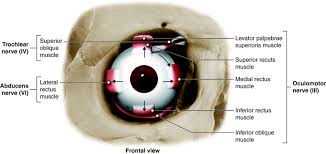Neurological eye issues are conditions where visual problems arise due to disruptions in the way the brain and nervous system process visual information. These issues go beyond typical eye conditions, as they are rooted in the nervous system rather than the eyes themselves. They can affect eyesight, eye movement, or even how the brain interprets what the eyes see. Advancements in neuro-optometric medicine have significantly improved the ways in which they can be addressed.
What Causes Neurological Eye Issues?
Neurological eye problems originate from complications in the visual pathways between the brain and the eyes or in the brain regions that process visual input. These pathways or regions may become disrupted due to various conditions. Some of these conditions include:
- Traumatic Brain Injuries (TBI): Severe head injuries, including concussions, can impair visual pathways in the brain, leading to issues like double vision or difficulty focusing.
- Stroke: Strokes may damage the parts of the brain responsible for controlling vision, resulting in partial vision loss, blurred vision, or difficulty with eye movement.
- Neurodegenerative Diseases: Conditions like Parkinson’s disease can influence eye movements or the ability to focus.
- Congenital Disorders: Some people are born with certain conditions, such as misaligned eyes, which can be traced back to neurological origins.
How Are Neurological Eye Issues Diagnosed?
Diagnosing neurological eye conditions first requires identifying symptoms and gathering relevant medical history. These conditions are often present in varied and complex ways. Healthcare providers use several diagnostic approaches to determine the underlying cause. Some of these are:
- Neurological Exams: Neuro-optometric specialists examine the patient’s overall nervous system, often focusing on reflexes, muscle strength, and the functioning of cranial nerves involved in vision.
- Visual Field Testing: This approach measures the peripheral (side) vision of a patient to detect blind spots or loss of vision potentially caused by brain or nerve issues.
- Electrodiagnostic Tests: Tools like visual evoked potentials (VEP) measure how quickly signals travel from the retina to the brain. Irregularities in these signals can indicate neurological disruptions in the visual pathway.
How Are Neurological Eye Issues Treated?
Treatment for neurological eye conditions depends on the specific cause, as well as the severity of the symptoms. Each treatment plan is personalized to meet the patient’s needs. Vision therapy involves guided exercises aimed at improving visual functions and retraining the eyes and brain to work together more efficiently. Patients with double vision may benefit from these structured programs. When neurological conditions cause lasting vision impairments, optical devices can provide solutions. Examples include prism glasses to correct double vision or magnifying aids to assist with difficulties in focus.
Lifestyle Modifications
For individuals facing chronic neurological conditions such as Parkinson’s disease, certain adjustments may help mitigate visual challenges. This could involve enhancing lighting in living spaces to reduce strain. Following structured routines to adapt to any visual impairments may also help.
When to Seek Neuro-Optometric Help
Sudden changes in vision, particularly when accompanied by symptoms like difficulty speaking, severe headaches, or loss of balance, require immediate medical attention. Managing neurological eye issues often involves addressing underlying conditions while aiding the patient in adapting to visual challenges. Neuro-optometrists are equipped to assess and propose appropriate treatment strategies aimed at improving quality of life.
- When to See a Foot and Ankle Surgeon
- Top Benefits of Visiting a Vein Clinic for Early Treatment of Vein Issues
- The Intersection of Gynecology and Endometriosis Treatment
- Regenerative Orthopedics for Post-Surgery Healing
- The Role of Pain Management in Living with Chronic Pain
